After the Norse Gods, MDM heads to Rome with its new Gladiator series of silver coins
Of all the numerous ancient mythology series released over the last three years, none had so rapid a release schedule as Norse Gods by MDM and BH Mayer. Quickly completing a nine-coin run in the space of a year, it was fortunate that these were amongst the cheapest of the choices on the market, although that was counter-balanced somewhat by the nine-coins in a year launch schedule. Doing away with high-end techniques and adornments, Norse Gods was an attractive set regardless, certainly one successful enough to greenlight the production of a sequel series using exactly the same style and format.
Fortunately, MDM have moved away from the ever-increasing selection of ancient gods to try something a little different and the chosen subject for this new eight coin series is a fascinating one – Roman Gladiators. To get the format out of the way first, they’re struck in two ounces of silver to a high-relief design. The coins are antique finished and share a common obverse. Sadly the extra ounce has gone on thickness so the diameter remains crown-sized at 38.61 mm.
As before, MDM are releasing these coins in pairs, the first two of which depict the Hoplomachus and the Secutor. The artwork is very much in keeping with Norse Gods and we’d be surprised if the same artist wasn’t responsible for both. The surrounding border carries the series name, the coin subject title and a recurring pattern. Other than the specific coin title, it’s common to all of the coins. The main artwork depicts the galdiator in the arena and the first two coins look great. Again, the coins have eschewed the stylistic look with one leaning heavily towards the realistic and it makes a welcome change.
These aren’t going to raise the genres bar, but they look great coins and we love that this hugely interesting subject has hardly appeared on modern numismatics outside of an unfinished Fijjian series from a few years ago. Packaging looks very good and we’re very pleased to see a collection box made available from the start, something we consider quite important these days. Early indicators are that these will sell for more than Norse Gods, a shame, but that’s yet to become apparent while we wait for widespread availability. At present, of our site sponsors Powercoin have them and Pela Coins and Coins Boutique will likely get them shortly.
2017 GLADIATOR COINS ‘ HOPLOMACHUS’ & ‘SECULTOR’
THE FIRST TWO GLADIATORS
HOPLOMACHUS
The name comes from the Greek meaning armed fighter. They were often armed with a spear and a gladius short sword, as well as a small round shield. Based on Greek Hoplites, they were fully armoured. Although similar to another type of gladiator called Thraex, their helmet was distinguished by the lack of a stylised griffin on the crest, but the helmet could be adorned with a plume of feathers on top and a single feather on each side.
Usually paired to fight against the Murmillo gladiator, the hoplomachus would wear a bronze helmet, a manica on his right arm, loincloth (subligaculum), heavy padding (fasciae) on his legs, and a pair of high greaves reaching to mid-thigh.
SECUTOR
The name Secutor means pursuer or chaser and they originally developed to fight another type of gladiator called the Retiarius who fought with a trident and a net. The Retiarius was seen as fighting for Neptune, the God of the Sea and the Secutor for Vulcan the God of Fire. Thus their fights symbolised the battle between fire and water.
The Secutor’s armour was the same as the Murmillo, with a rectangular shield called the Scutum and a helmet with two small round eyes, usually around 3 cm in diameter to protect against the trident. The helmet was rounded to prevent snagging on the opponents net. This type of gladiator fought with a gladius, the short short the Roman Army used to hack its way through the ancient world.
COMMON OBVERSE AND INDIVIDUAL COIN PACKAGING
SOME OTHER GLADIATORS
We know the next two coins will depict the Thraex and the Essedarius but there are many other types of gladiators that fought in the various arenas of the Roman Empire. Here are some quick descriptions of the more important ones, although not necessarily the last four coins.
THRAEX: Thracian in origin, they wer similar to Hoplomachi whom they were often paired to fight, the main difference was the stylised griffin on the helmet crest and the use of a 34 cm long Thracian curved sword in place of the Roman gladius. Their shields were small and square-shaped shield called parmula. They are thought to have replaced Gauls in the arena after that country made peace with Rome.
ESSEDARIUS: No doubt an imposing site in the arena, the Essedarius fought from a chariot. It isn’t known if they were in the chariot alone or had a driver. They normally fought with a spear and a sword as a side-arm but sometimes also had a small shield for defence. They charged their opponent with their chariot until the opposing gladiator was either impaled by the spear, trampled by the horses, or run over by the wheels of the chariot. They were relatively hard to defeat due to the speed of the chariot, but once the wheels were taken out they were easy to kill, if they didn’t know how to ride a horse. It was a common tactic that if their chariot was broken they used one of the horses from the chariot as a mount.
PROVOCATORES: Meaning challenger, the provocator fought with weapons similar to legionary armature in the late Republican and early Imperial era. In the late Imperial era armament followed changes in arena fashion only. Provocatores have been shown wearing a loincloth, a belt, a long greave on the left leg, a manica on the lower right arm, and a visored helmet without brim or crest, but with a feather on each side. They were the only gladiators protected by a breastplate (cardiophylax) which is usually rectangular, later often crescent-shaped. They fought with a tall, rectangular shield and the gladius. They were paired only against other provocatores.
COLLECTORS BOX TO HOLD THE EIGHT-COIN SET
RETIARIUS: Net fighters, the Retiarius carried a trident and a net and fought without the protection of a helmet. The retiarius wore a loincloth held in place by a wide belt and a larger arm guard (manica) extending to the shoulder and left side of the chest. Occasionally a metal shoulder shield (galerus) was added to protect the neck and lower face. Retiarii usually fought Secutores but sometimes fought Myrmillones.
GALLUS: Named after the Gauls that made up this class of gladiator, they were equipped with Gaulish arms and armour and fought in what Romans would have recognised as a “Gaulish style”. Probably a heavyweight, and heavily armoured, the Gallus seems to have been replaced by, or perhaps transformed into, the Murmillo, soon after Gaul’s absorption as a Roman province.
MURMILLO: These wore a helmet with a stylised fish on the crest (the mormylos or sea fish), as well as an arm guard (manica), a loincloth and belt, a gaiter on his right leg, thick wrappings covering the tops of his feet, and a very short greave with an indentation for the padding at the top of the feet. They are heavily armoured gladiators: the murmillo carried a gladius (64–81 cm long) and a tall, oblong shield in the legionary style. Murmillones were typically paired with Thracian, but occasionally with the similar hoplomachus, or a rather different Retarius.
SPECIFICATION
| NAME | 2017 THE GLADIATORS SERIES |
| DENOMINATION | $5 Solomon Islands |
| COMPOSITION | 0.999 silver |
| WEIGHT | 62.2 grams |
| DIAMETER | 38.61 mm |
| FINISH | Antique |
| MODIFICATIONS | None |
| MINTAGE | 1,000 |
| BOX / COA | Yes / Yes |



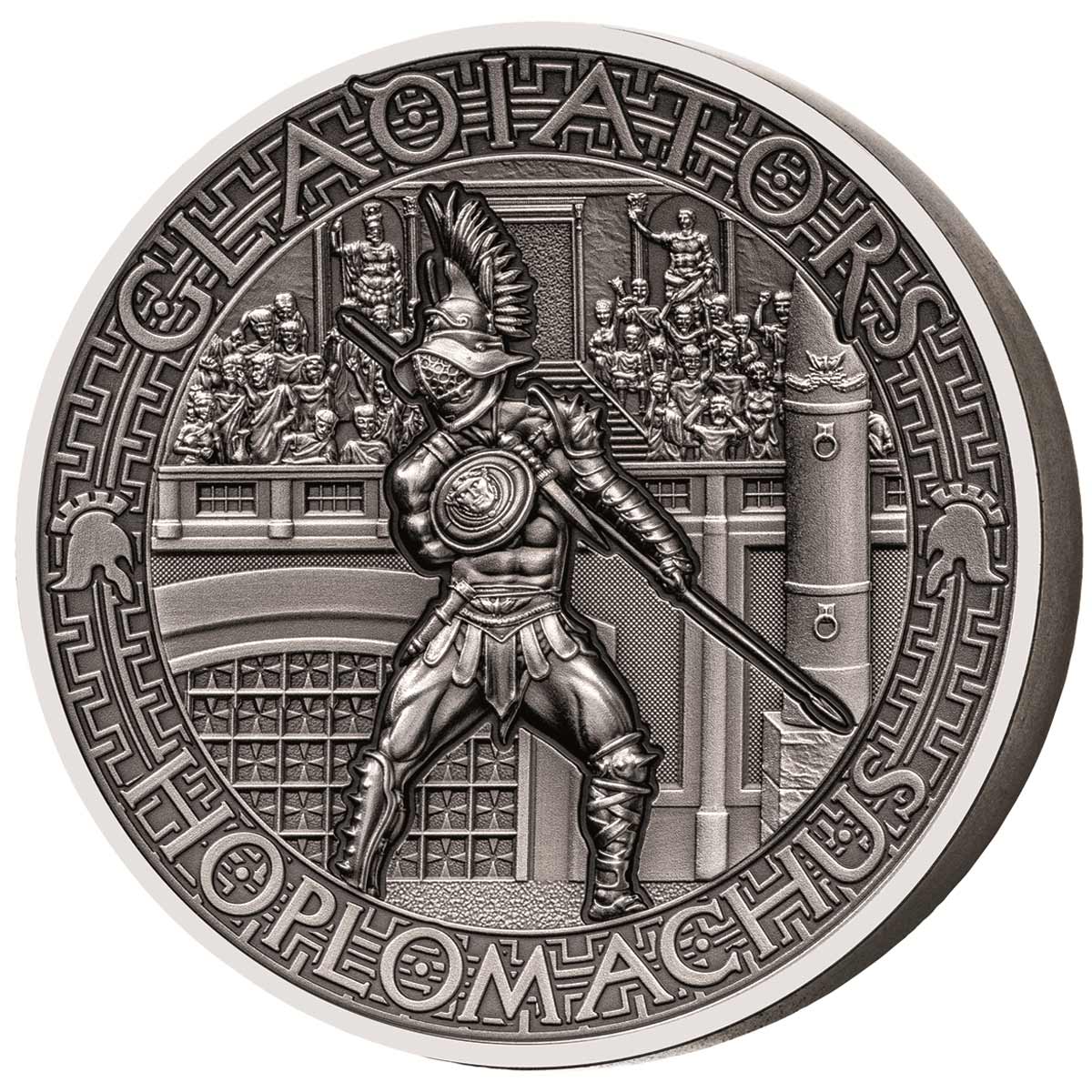
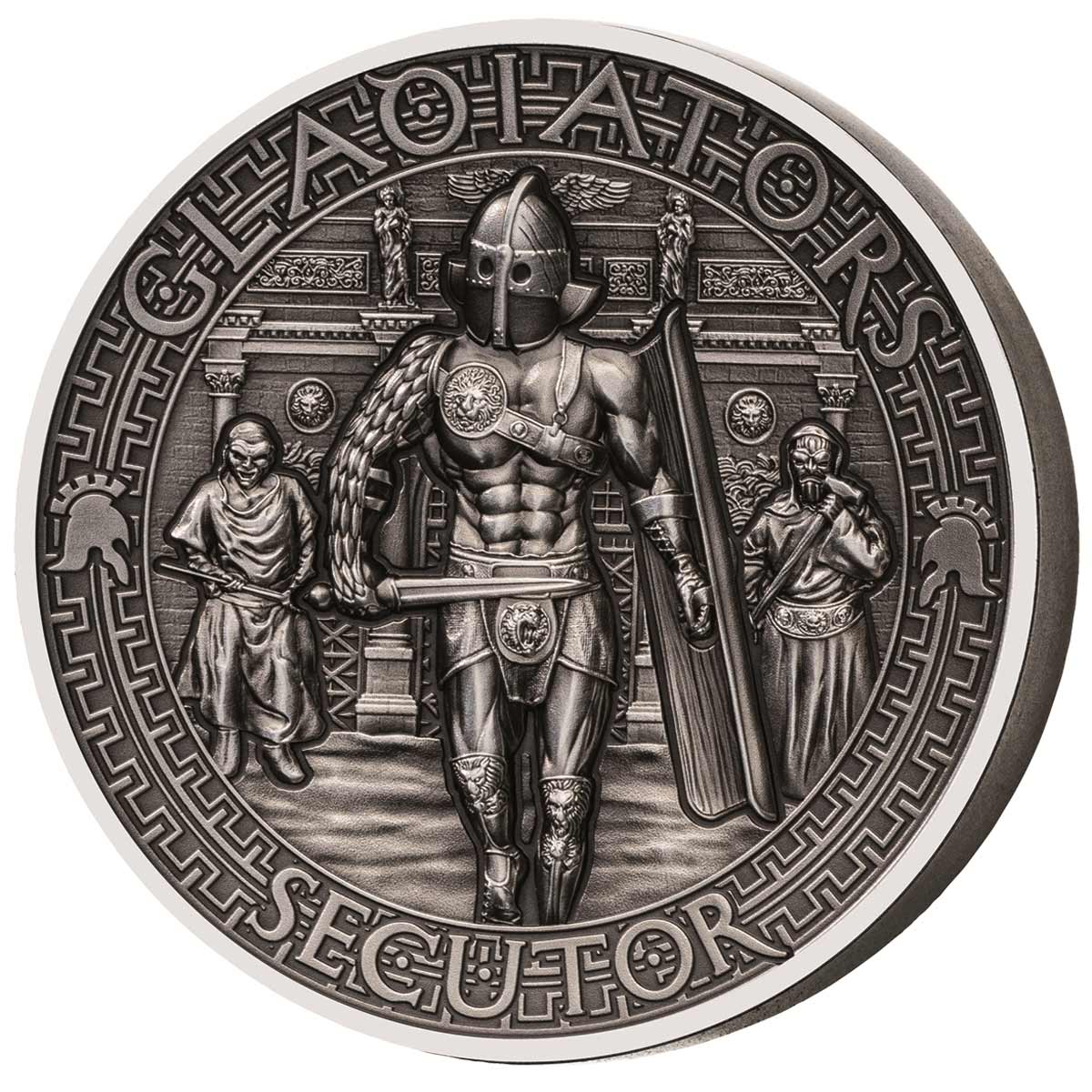

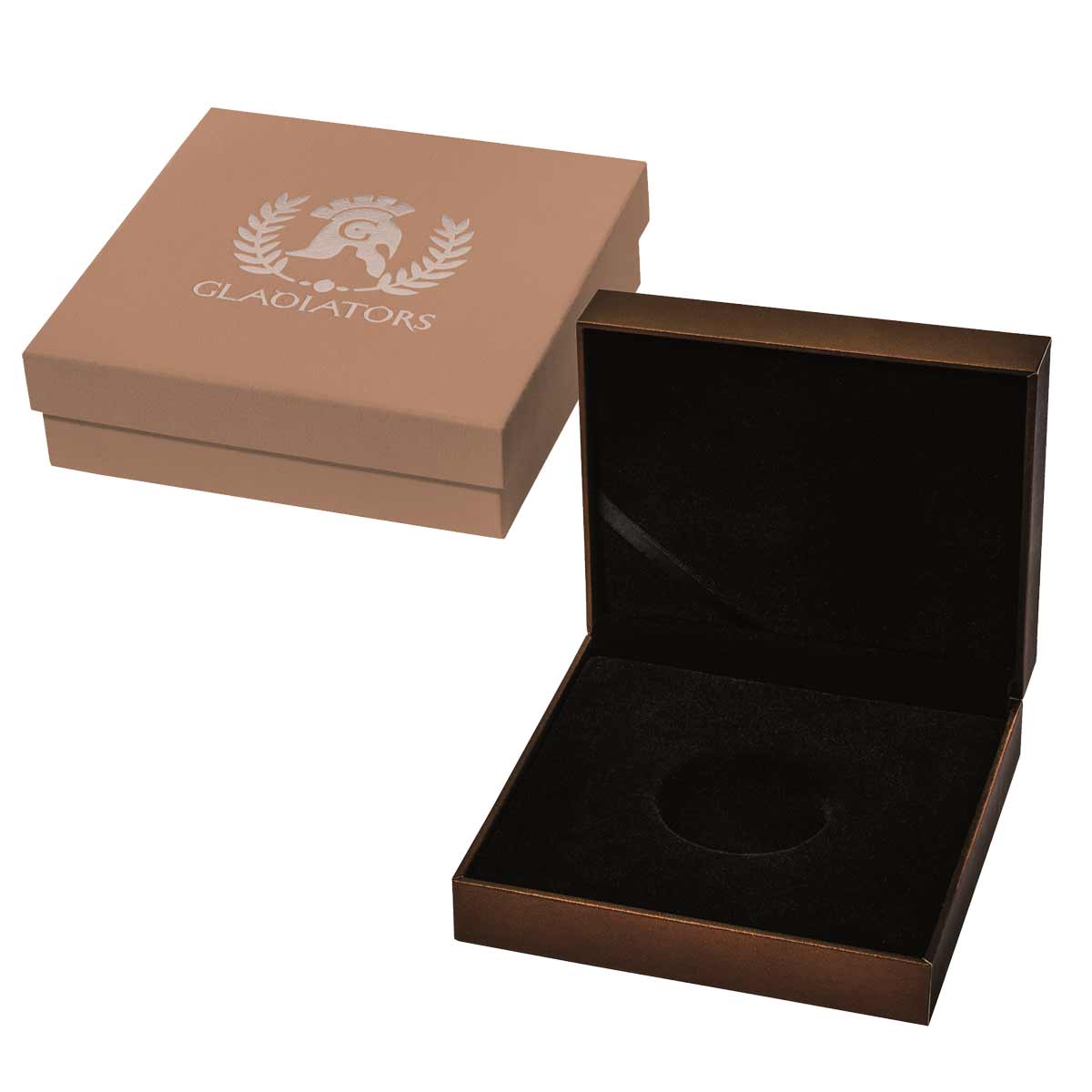
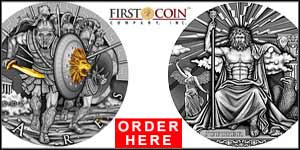

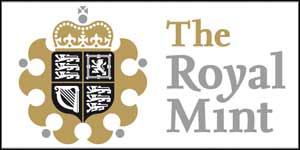





Leave A Comment